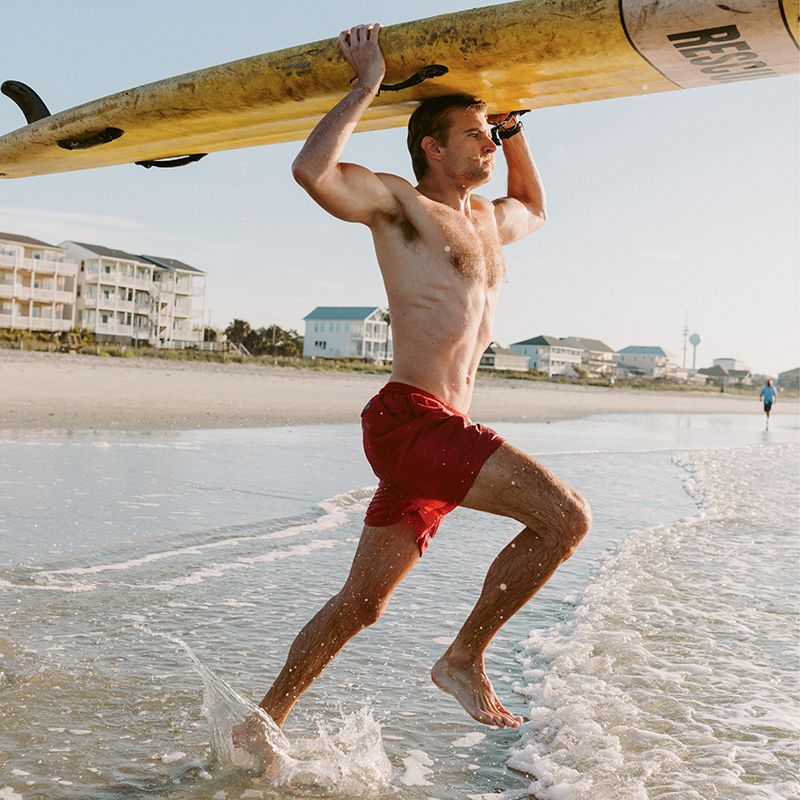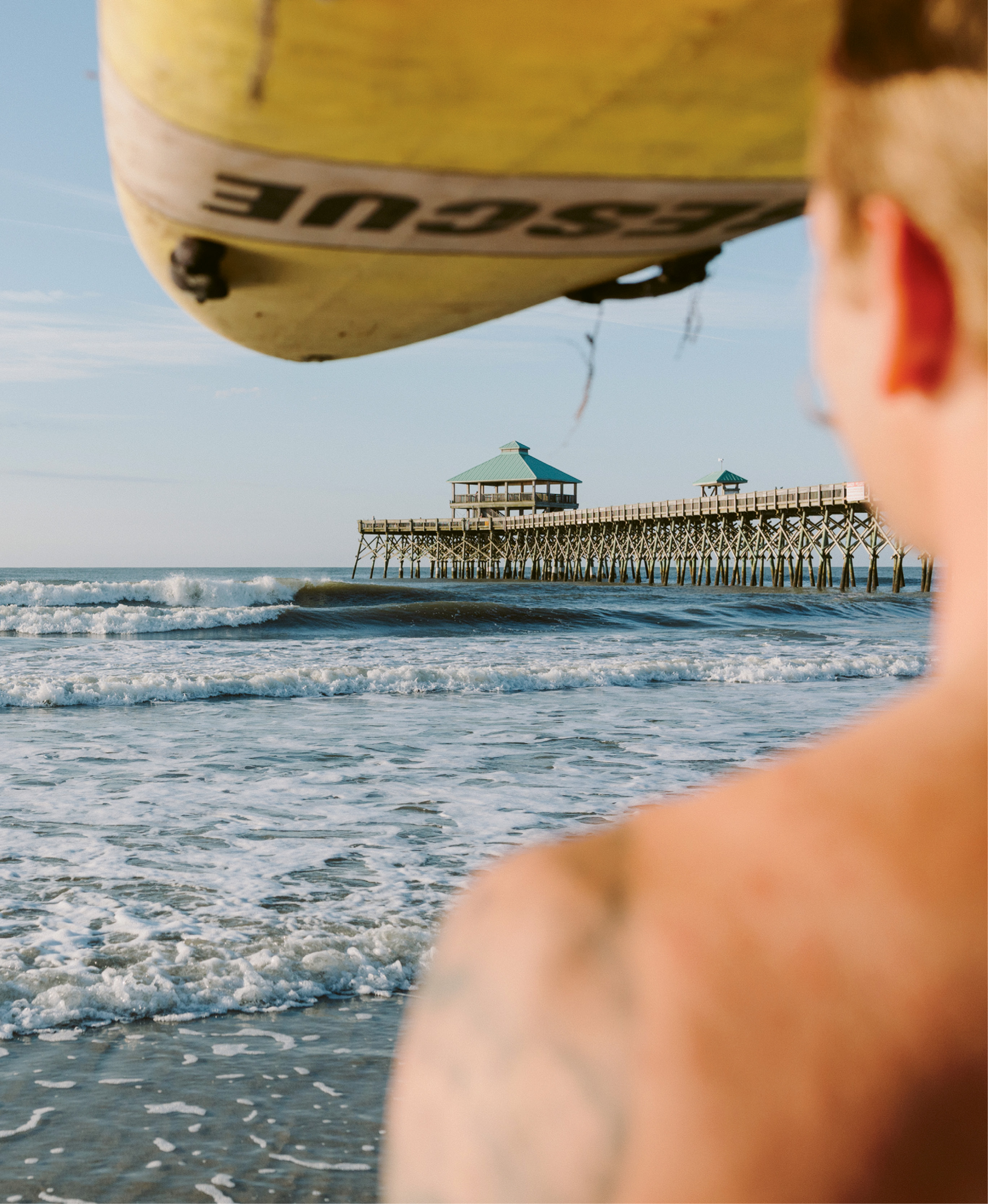Luke Meier talks ocean rescue on Charleston’s barrier islands

Luke Meier remembers his most dramatic rescue as clearly as a Folly sunset. While patrolling on a Jet Ski, the Charleston County Parks and Recreation’s Ocean Rescue Guards Trainer, and his teammate Kurt Kastena, were alerted to a flipped kayak. They found a woman trapped dangerously close to an oyster-covered bridge footing. Meier immediately put on fins and dove under. Adrenaline pumping, he snagged the swimmer while Kasten motored through to the other side of the bridge. Careful to maneuver the woman through the razor sharp oyster bed, he emerged to find Kasten in perfect position. The men loaded the woman onto the rescue sled and navigated away from the hazard. Just another day in the life of a Charleston lifeguard.
CM: Where did you grow up?
LM: I was born in Sparta, New Jersey, but I moved to Mount Pleasant at age nine and later went to University of South Carolina.
CM: Did you always love the ocean?
LM: Yes. As a kid it meant boogie boarding with my dad. As a teenager it developed into my love of surfing.
CM: How did you become the head trainer for the Ocean Rescue Guards?
LM: I started out as a lifeguard, then soon became lifeguard supervisor. After eight years on the beach, I was promoted to Ocean Rescue Trainer.
CM: How does the program work?
LM: Candidates have to complete a one-mile run in under seven minutes and 45 seconds on a track and the 500 meter swim in under nine minutes in the pool. Once this prerequisite is completed, there are weekly trainings in the ocean, surf school, and a first responder class. If you make it through all of that, you have access to the greatest job you will likely ever have.
CM: Do y'all only hire high school kids?
LM: No. We start hiring at 16 years old and will hire anyone who demonstrates capability via our vetting process. We have had people that came to work for us that are ex-military, school teachers, and medical professionals.

To the Rescue - Summertime is all about hitting the shore, but with fun in the sun comes safety hazards. Fortunately, Charleston County Parks and Recreation’s Ocean Rescue Lifeguards patrol areas of Folly, Isle of Palms, and Kiawah Island to keep beachgoers safe. Meet the head trainer who gets these lifesavers in shape.
CM: How many people participate as lifeguards each season?
LM: We train about 80 to be United States Lifesaving Association ocean rescue certified per year. (USLA is the only true accredited agency for open water rescue in the country). Approximately 40 to 50 on Folly, 12 to 20 on Isle of Palms, and five to 10 at Beachwalker County Park on Kiawah. We have gained advanced agency accreditation as of this year which means each of our guards require 48 hours of pre-season training prior to getting in the stand. This largely consists of training with rescue equipment, medical first responder certification, and ocean specific physical conditioning.
CM: What's the hardest part about being a lifeguard?
LM: I would say enduring the elements 10-plus hours/shift is definitely a challenge beach lifeguard's face. As you know, summer in Charleston means strings of hot weather and windy and/or stormy afternoons. Staying vigilant is the root of what we do, and being beat up by the weather can make that difficult, but we rotate in and out of watch often to mitigate this. Also coffee helps.
CM: What's the best part?
LM: The best part is applying all of that training and skill to making that rescue or providing medical care to a person in deep trouble and having a positive outcome with the team.
Lives: On James Island
Life saver: “I have a BA in criminology and criminal justice, and I’m currently studying for my RN. My nursing graduation is set for December. I just finished my pediatric rotation and start in the ICU next”
The best part of the job: “Applying all of that training and skill to making that rescue or providing medical care to a person in deep trouble”